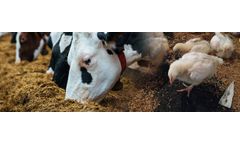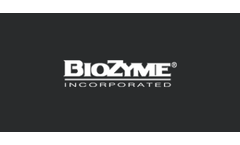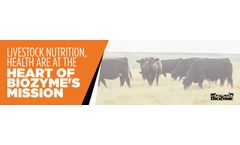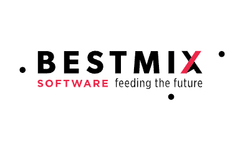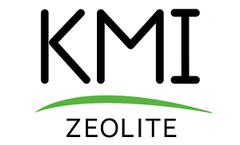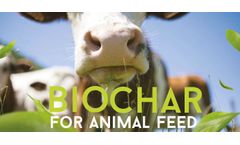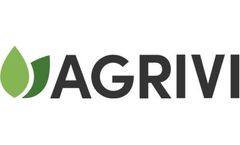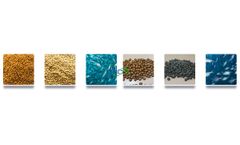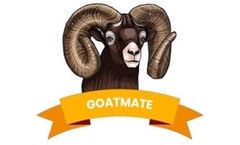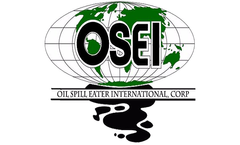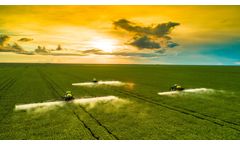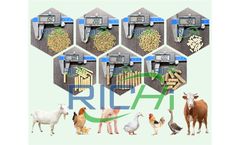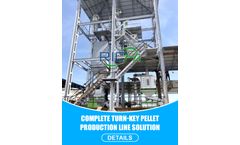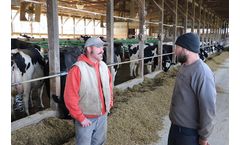Refine by
Ruminant Articles & Analysis
47 articles found
One of the primary benefits lies in biochar’s high surface area, which provides a medium for the absorption and retention of nutrients. As ruminants and non-ruminants digest their food, the biochar particles act like a sponge, absorbing toxins, excess moisture, and harmful microbes in the gut. ...
Many animals, particularly non-ruminants like poultry and swine, lack endogenous enzymes to fully degrade NSPs, such as cellulose and hemicellulose found in plant materials. ...
Time to make hay! Or perhaps you are getting ready to store your hay. Your geographic location can determine what phase of hay production you are in. Regardless, it’s important to ensure you are testing moisture in hay. At BioZyme®, we focus on animal health and nutrition for all animals. We know that several species, including horses, cattle, sheep and goats, depend on high-quality ...
Livestock nutrition is a big business. At BioZyme® Inc., we know that good nutrition is also the cornerstone of a good health protocol. Nutrition and health work synergistically. It’s fairly well-known that 70% of the immune response occurs in the digestive system. A healthy immune response leads to a healthy animal. That is one reason that BioZyme places such an emphasis on digestive ...
This technological revolution promises to improve efficiency, sustainability, and animal welfare, but it also raises ethical and environmental questions. In this article, we will explore the impact of AI on intensive farming, examining the benefits, challenges, and potential future implications. ...
Why is it important to have a high-quality feed? The quality of ruminant feed is directly linked with milk production, animal health, as well as farm performance. ...
The company focuses on four main subsectors: poultry, pigs, ruminants, and aquaculture. AB Vista is headquartered in the United Kingdom, with regional offices in the United States, Brazil, Spain, Germany, India, Singapore, and ...
ByBESTMIX
Many animals such as hogs and poultry need preformed protein from plants and animals. Ruminant animals such as dairy cows, beef cattle, sheep, goats, etc have microorganisms in their first stomach (rumen) that make protein from simple nitrogen compounds. ...
Additionally, biochar can reduce methane emissions from ruminant animals, as its presence in the digestive tract alters the fermentation process and lowers methane production. ...
Furthermore, cellulases play an integral role in the animal feed industry and can further be used to positively affect gastrointestinal processes in ruminants, further leading to increased availability of absorbable nutrients through feed enhancement. ...
For instance, RFID ear tags used on dairy farms collect vital statistics like feed consumption, milk production and health metrics like temperature and rumination. This gives farmers precise data to make herd improvement decisions and identify any red flags in their herd production. ...
ByAGRIVI
Since they’re not digested by ruminants or other livestock, keratin proteins in feathers, as well as other keratinous substances, are mainly unreachable if the structural orientation given by distinct chemical groups is not dramatically fragmented. ...
Extruded chicken feed, because of its small mass thickness, can reduce chicken feed consumption, avoid weight problems, and also enhance egg production. ( 4) Puffed livestock feed (urea puffed corn). Ruminants such as livestock as well as sheep can convert non-protein nitrogen (such as urea) right into animal protein. ...
Goat Farming – Impacting LivelihoodsGoat farmers could earn 250-300% higher incomes from goat rearing only by adopting scientific norms of goat management and potentially higher by improving herd size and engaging in goat rearing as an enterprise by rural households.Continued innovation is needed for better technology acceptance by all stakeholders. ...
Also, salmonella may a concern with non-composted manure from both poultry and ruminants. What does chicken litter have in it? Poultry litter. In agriculture, poultry litter or broiler litter is a mixture of poultry excreta, spilled feed, feathers, and material used as bedding in poultry operations. ...
Optimisation of the composition of animal diets or the use of additives for feedstocks to reduce methane produced by ruminating animals are all options to reduce emissions from livestock farming.5,6 For crops, maintaining good quality soil conditions plays an important role in minimising emissions as building organic carbon content in soil helps increase its sequestration ...
RICHI feed pellet machine types: poultry feed pellet mill machine feed grass pellet mill machine Animal Fodder Pellet Mill Machine Chicken Compress Pellet Mill Feed Pellet Machine livestock fodder pellet making machine aqua fish shrimp feed pellet mill cow feed pellet mill shrimp feed pellet mill machines goat ruminant feed pellet making machine CE Approved pig feed compress ...
Malaysia 3-5T/H Poultry Mash Feed Plant Project Indonesia 3-5T/H Ruminant Feed Plant For Sheep And Cattle Pellets Production Uzbekistan 1T/H Floating Fish Feed Plant And 1-2TPH Extruded Cattle Feed Plant Tanzania 3-5T/H Animal Livestock Poultry Pellet And Mash Feed Mill Project Hong Kong 3-4T/H Ruminant Cattle Feed Plant Project New Zealand 3-5T/H Animal Feed ...
The solution After meeting with representatives from SCR, Volenec chose to purchase the SCR Heatime HR-LD System, which monitors cows’ rumination and activity. Each cow wears a collar that transmits activity and rumination data from anywhere on the farm a few times every hour. ...
Application of Cellulase Common livestock and poultry feeds such as grains, beans, wheat and processing by-products contain a lot of cellulose. Except for ruminant animals that can use part of it with rumen microbes, other animals such as pigs, chickens and other monogastric animals cannot use cellulose. ...

